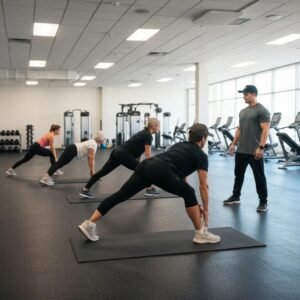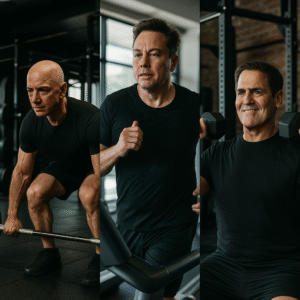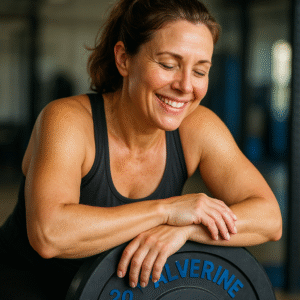In the world of fitness, group training has become a popular choice for individuals seeking motivation, camaraderie, and effective workouts. However, in today’s fast-paced society, time is a precious commodity, and maximizing both time and results in group training sessions is key. Welcome to our guide on how to optimize group training to achieve maximum efficiency and results. In this blog, we’ll explore proven strategies and techniques to make the most out of your group training sessions. From structuring workouts for optimal productivity to fostering a supportive and motivating environment, we’ll delve into the essential elements that contribute to success in group fitness settings. Whether you’re a fitness enthusiast looking to push your limits or a trainer seeking to elevate your group sessions, this guide is designed to provide practical insights and actionable tips to help you unlock the full potential of group training. Join us on this journey as we discover how to maximize your time and results through optimized group training methods.
Effective Time Management Tips for Group Training Instructors
Time is a precious commodity, especially in the realm of group training. As an instructor, maximizing every minute of your session is crucial for delivering impactful workouts and ensuring participant satisfaction. Effective time management not only enhances the efficiency of your sessions but also contributes to better results for your clients. In this article, we’ll explore eight practical time management tips tailored specifically for group training instructors, helping you optimize your sessions and deliver exceptional experiences.
 Plan Your Session in Advance
Plan Your Session in Advance
Before stepping into the training arena, take the time to meticulously plan your session. Outline the exercises, allocate time for each segment, and consider any necessary modifications or progressions. Having a clear plan in place allows you to maintain focus during the session and ensures that you make the most of the available time.
Set Realistic Time Limits:
Time constraints are inherent in group training settings, so it’s essential to set realistic time limits for each exercise or circuit. Be mindful of the complexity of movements, equipment setup, and transition times between stations. Setting achievable time limits helps you maintain momentum throughout the session and prevents activities from dragging on unnecessarily.
Utilize Interval Timers
Interval timers are invaluable tools for group training instructors, helping you manage time efficiently and keep participants on track. Whether you’re implementing high-intensity interval training (HIIT) or structuring circuit workouts, interval timers provide audible cues for work and rest periods, ensuring seamless transitions between exercises and optimizing overall session flow.
Incorporate Supersets and Circuits
To maximize efficiency without compromising effectiveness, incorporate supersets and circuits into your training sessions. By pairing complementary exercises or organizing movements into circuits, you can minimize downtime and keep participants engaged throughout the entire session. This approach allows you to target multiple muscle groups simultaneously while optimizing time utilization.
Delegate Responsibilities
In a group training setting, delegating certain responsibilities can help streamline operations and free up more time for instruction. Consider assigning tasks such as equipment setup, demonstration of exercises, or monitoring participant form to trusted assistants or co-instructors. Delegating responsibilities allows you to focus on delivering high-quality instruction while ensuring that logistical aspects are taken care of efficiently.
The Importance of Proper Warm-up and Cool-down in Group Training
Warm-up and cool-down periods are often overlooked components of group training sessions, yet they play a vital role in optimizing performance, preventing injuries, and enhancing overall workout effectiveness. In this article, we’ll delve into the significance of incorporating proper warm-up and cool-down routines into group training sessions. From preparing the body for exercise to aiding in recovery post-workout, these essential components contribute to a safe and rewarding training experience for participants.
Preparing the Body for Exercise
The warm-up phase serves as a crucial preparation for the body, gradually increasing heart rate, blood flow, and core body temperature. In a group training setting, a dynamic warm-up routine can help participants transition from a state of rest to one of physical readiness for the upcoming workout. Incorporating dynamic movements such as leg swings, arm circles, and bodyweight squats primes the muscles and joints, reducing the risk of injury during more intense exercise.
Enhancing Flexibility and Range of Motion
A well-designed warm-up routine not only prepares the body for exercise but also helps improve flexibility and range of motion. Dynamic stretches and mobility drills incorporated into the warm-up phase target specific muscle groups and joints, allowing participants to move more freely and efficiently during the workout. This increased flexibility not only enhances performance but also reduces the likelihood of strains or sprains during exercise.
Mental Preparation and Focus
Beyond its physical benefits, the warm-up phase also provides an opportunity for mental preparation and focus. Group training instructors can use this time to mentally engage participants, setting the tone for the upcoming workout and reinforcing key training objectives. By guiding participants through mindful breathing exercises or visualization techniques, instructors can help cultivate a sense of focus and determination, ensuring that participants are mentally prepared to tackle the challenges ahead.
Injury Prevention
Proper warm-up is one of the most effective strategies for injury prevention in group training settings. By gradually increasing blood flow to muscles and lubricating joints, a thorough warm-up routine reduces the risk of strains, sprains, and other common exercise-related injuries. This is particularly important in group settings where participants may have varying fitness levels and mobility restrictions. A comprehensive warm-up protocol ensures that everyone is adequately prepared for the demands of the workout.
Facilitating Recovery and Reducing Muscle Soreness
Following the main workout, the cool-down phase plays a crucial role in facilitating recovery and reducing muscle soreness. Gentle cardiovascular activity, such as walking or light jogging, helps gradually lower heart rate and blood pressure, promoting the removal of metabolic waste products from the muscles. Additionally, incorporating static stretching exercises during the cool-down phase helps lengthen muscles and improve flexibility, reducing the likelihood of post-workout stiffness and soreness.
Incorporating Functional Training into Group Workouts
Functional training has gained popularity for its focus on movements that mimic real-life activities, improving overall strength, flexibility, and mobility. Integrating functional exercises into group workouts not only enhances everyday performance but also fosters a dynamic and engaging training experience for participants. In this article, we’ll explore key strategies for effectively incorporating functional training into group workouts, helping instructors maximize the benefits for their clients.
- Target Multi-Joint Movements: Focus on exercises that engage multiple muscle groups and joints simultaneously, such as squats, lunges, and deadlifts. These compound movements mimic natural human movements and improve coordination and stability.
- Emphasize Core Stability: Incorporate exercises that challenge core stability, such as plank variations, rotational movements, and stability ball exercises. A strong core is essential for overall strength and injury prevention.
- Utilize Functional Equipment: Integrate functional training equipment like resistance bands, kettlebells, and medicine balls into group workouts to add variety and intensity. These tools allow for dynamic and versatile exercises that simulate real-life movements.
- Incorporate Balance and Coordination Drills: Include exercises that improve balance and coordination, such as single-leg squats, balance board exercises, and agility drills. Enhancing these skills not only improves athletic performance but also reduces the risk of falls and injuries.
Incorporating functional training into group workouts offers numerous benefits for participants, including improved strength, flexibility, and mobility.
Conclusion
At the Results Transformation Center in Sparks, Nevada, we prioritize the optimization of group training to maximize both time and results for our clients. Through our dedicated approach, we strive to ensure that every session is efficiently structured to deliver optimal outcomes, utilizing innovative techniques and personalized attention. With a commitment to excellence and a focus on individual progress within a supportive group environment, we empower our clients to achieve their fitness goals effectively and efficiently. Contact us at (775) 360-5776 to embark on your transformative journey towards a healthier lifestyle.








